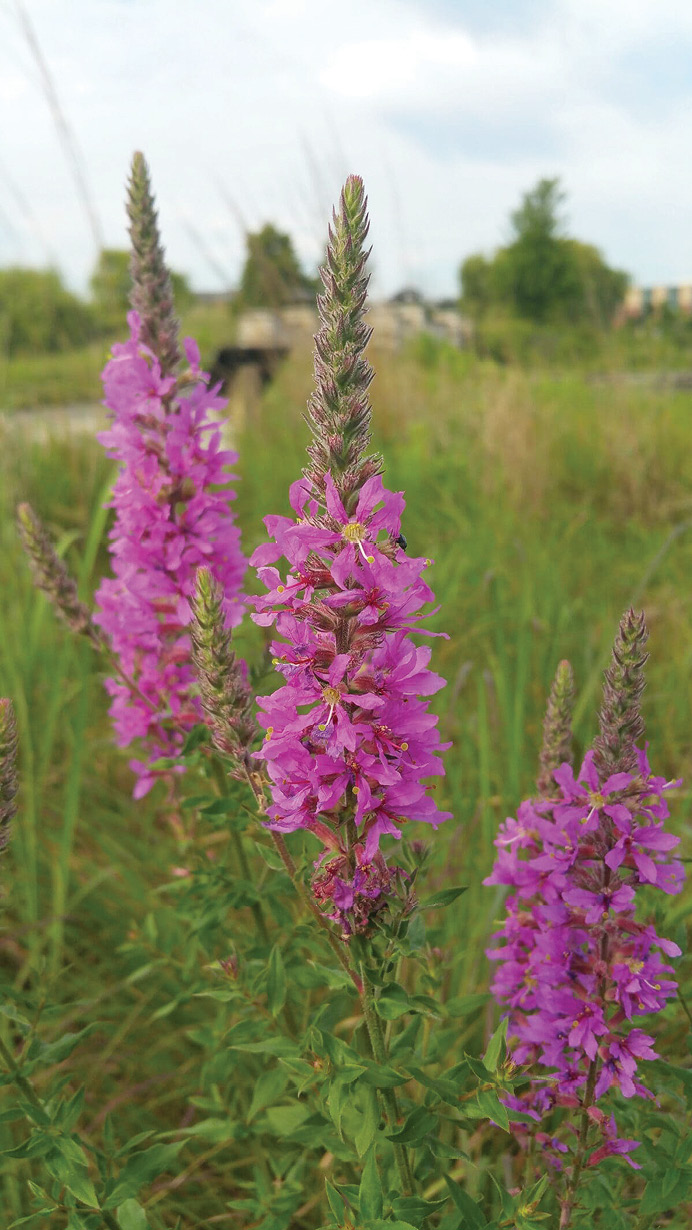
Purple Loosestrife Redux
September marks five years since the launch of the Granby Conservation Commission’s NOT WANTED campaign. The first Drummer invasive-of-the-month column profiled purple loosestrife (Lythrum salicaria), a lovely but dangerous invasive plant that thrives in and rapidly dominates wet areas. Mature plants can produce over 2 million seeds per year.
Loosestrife is known as a sort of invasive success story because of a biological control strategy that UConn began in the 1990s using two and then four introduced beneficial insects: two leaf-eating beetles and two weevils. They were spread partly by a UConn program targeting teachers and students in classrooms across the state.
But two very wet years have allowed loosestrife to explode, and the telltale purple blooms are everywhere. Another factor may be beneficial insect populations decline, victims of their own success. Releasing more insects and building back their populations takes time, and in the short term the main control methods are pulling smaller plants by the roots, and cutting larger ones at the base, destroying them before they flower and set seed.
Granby Wildflower Meadow action
The talented invasive action team performed careful plant surgery in the wondrous Granby Wildflower Meadow in July. The gurus of native plant restoration who make up the Friends of the Meadow asked for help freeing the carefully chosen and community-planted native plants from a growing infestation of Canada thistle (Cirsium arvense), which flowers and sets seed in mid-summer. We cut the flowering stems, rather than digging the plants by the roots, because their main movement mode is via rhizomes underground, and not disturbing the meadow’s soil is a key strategy for helping the natives flourish.
Canada thistle is a prickly, unpleasant target, but it was clustered in a few specific areas. The crew worked all morning under the blazing sun and had rolled the cuttings into a huge tarp burrito to remove and burn. But Maple View Farm neighbor Kate Bogli picked it all up with her tractor and fed it to her pigs. Thanks Kate!
Everyone should visit the Wildflower Meadow. It’s five open, flat acres on Route 10, south of Salmon Brook Park, north of the McLean Refuge parking lot. The diversity of plant and pollinator life already present in this ambitious project is stunning and gets better every year.
Information, pictures, resources and five years of NOT WANTED columns can be found at GranbyInvasivePlants.weebly.com
